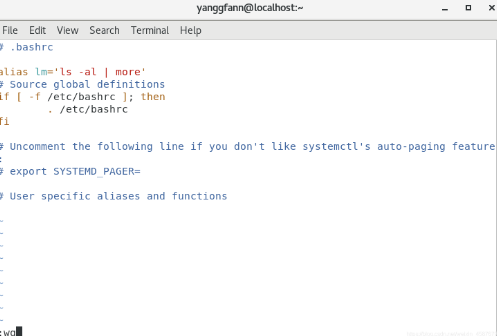alias教程pdf
软件: alias
Alias Tutorial PDF Resources
Alias is a powerful command-line feature in Linux/Unix systems that simplifies repetitive tasks by creating shortcuts for long or complex commands. While specific "Alias Tutorial PDF" files may not be readily available in all public repositories, you can access high-quality written tutorials with step-by-step instructions (which can often be saved as PDFs) from trusted platforms like CSDN and technical blogs. Below is a structured guide to learning Alias, including key concepts and practical examples.
1. Basic Syntax of Alias
The core syntax for creating an alias is straightforward:
```bash
alias 别名='原命令 [选项]'
```
- `别名`: The shorthand name you want to assign (e.g., `ll`).
- `原命令`: The full command (or command sequence) the alias will represent (e.g., `ls -alF`).
- Single Quotes: Required to prevent special characters (like `$`, `*`) from being interpreted prematurely.
2. Common Use Cases for Alias

Alias is widely used to streamline daily workflows. Here are some practical examples:
- Simplify Common Commands: Replace `ls -alF` with `ll` to quickly list all files (including hidden ones) in long format.
- Avoid Repetitive Flags: Use `alias cp='cp -i'` to enable interactive confirmation before overwriting files.
- Combine Multiple Commands: Chain commands with `&&` (e.g., `alias update='sudo apt update && sudo apt upgrade -y'` to refresh package lists and upgrade installed packages in one step).
- Customize Paths: Shorten directory navigation (e.g., `alias ..='cd ..'` to move up one directory level).
3. Temporary vs. Permanent Alias
- Temporary Alias: Created in the current terminal session using the `alias` command. It disappears when the terminal is closed.
```bash
alias tempalias='echo "This is temporary"'
```
- Permanent Alias: To retain aliases across sessions, add them to your shell’s configuration file. For Bash users, this is typically `~/.bashrc` (or `~/.bash_profile` for login shells); for Zsh users, use `~/.zshrc`. After editing, run `source ~/.bashrc` (or the respective file) to apply changes immediately.
4. Managing Alias
- View All Alias: Run `alias` without arguments to list all defined aliases in the current session.
- Delete Alias: Use `unalias 别名` to remove a specific alias (e.g., `unalias ll`). To delete all aliases, use `unalias -a`.
- Override Alias: Precede the aliased command with a backslash (`\`) to use the original command instead. For example, `\ls` ignores the `ls='ls --color=auto'` alias.
5. Advanced Tips for Alias
- Alias with Parameters: For commands requiring dynamic input, use a shell function instead of a simple alias. For example, create a function to make and enter a directory in one step:
```bash
mkcd() {
mkdir -p "$1" && cd "$1"
}
```
Add this to your shell configuration file to use it permanently.
For a more detailed, structured guide, you can refer to tutorials on platforms like CSDN (e.g., "Linux新手必备:A类指令详解与基础命令集PDF_alias别名设置技巧") or technical blogs (e.g., "How to Quickly Master Linux Aliases Commands"). These resources often include downloadable PDFs or allow you to save the content as a PDF for offline reference.
Alias is a powerful command-line feature in Linux/Unix systems that simplifies repetitive tasks by creating shortcuts for long or complex commands. While specific "Alias Tutorial PDF" files may not be readily available in all public repositories, you can access high-quality written tutorials with step-by-step instructions (which can often be saved as PDFs) from trusted platforms like CSDN and technical blogs. Below is a structured guide to learning Alias, including key concepts and practical examples.
1. Basic Syntax of Alias
The core syntax for creating an alias is straightforward:
```bash
alias 别名='原命令 [选项]'
```
- `别名`: The shorthand name you want to assign (e.g., `ll`).
- `原命令`: The full command (or command sequence) the alias will represent (e.g., `ls -alF`).
- Single Quotes: Required to prevent special characters (like `$`, `*`) from being interpreted prematurely.
2. Common Use Cases for Alias

Alias is widely used to streamline daily workflows. Here are some practical examples:
- Simplify Common Commands: Replace `ls -alF` with `ll` to quickly list all files (including hidden ones) in long format.
- Avoid Repetitive Flags: Use `alias cp='cp -i'` to enable interactive confirmation before overwriting files.
- Combine Multiple Commands: Chain commands with `&&` (e.g., `alias update='sudo apt update && sudo apt upgrade -y'` to refresh package lists and upgrade installed packages in one step).
- Customize Paths: Shorten directory navigation (e.g., `alias ..='cd ..'` to move up one directory level).
3. Temporary vs. Permanent Alias
- Temporary Alias: Created in the current terminal session using the `alias` command. It disappears when the terminal is closed.
```bash
alias tempalias='echo "This is temporary"'
```
- Permanent Alias: To retain aliases across sessions, add them to your shell’s configuration file. For Bash users, this is typically `~/.bashrc` (or `~/.bash_profile` for login shells); for Zsh users, use `~/.zshrc`. After editing, run `source ~/.bashrc` (or the respective file) to apply changes immediately.
4. Managing Alias
- View All Alias: Run `alias` without arguments to list all defined aliases in the current session.
- Delete Alias: Use `unalias 别名` to remove a specific alias (e.g., `unalias ll`). To delete all aliases, use `unalias -a`.
- Override Alias: Precede the aliased command with a backslash (`\`) to use the original command instead. For example, `\ls` ignores the `ls='ls --color=auto'` alias.
5. Advanced Tips for Alias
- Alias with Parameters: For commands requiring dynamic input, use a shell function instead of a simple alias. For example, create a function to make and enter a directory in one step:
```bash
mkcd() {
mkdir -p "$1" && cd "$1"
}
```
Add this to your shell configuration file to use it permanently.
For a more detailed, structured guide, you can refer to tutorials on platforms like CSDN (e.g., "Linux新手必备:A类指令详解与基础命令集PDF_alias别名设置技巧") or technical blogs (e.g., "How to Quickly Master Linux Aliases Commands"). These resources often include downloadable PDFs or allow you to save the content as a PDF for offline reference.











